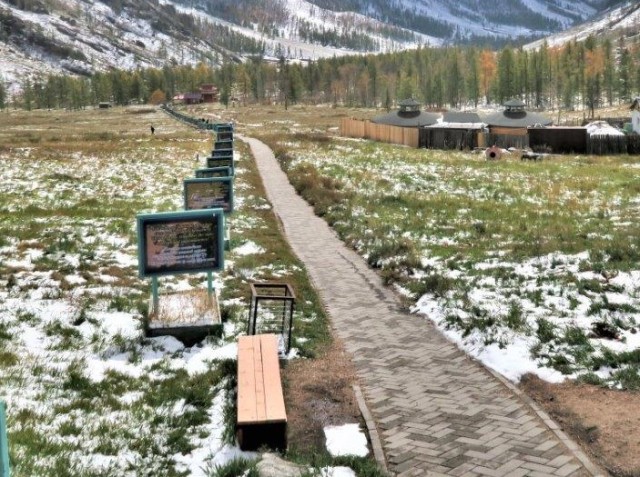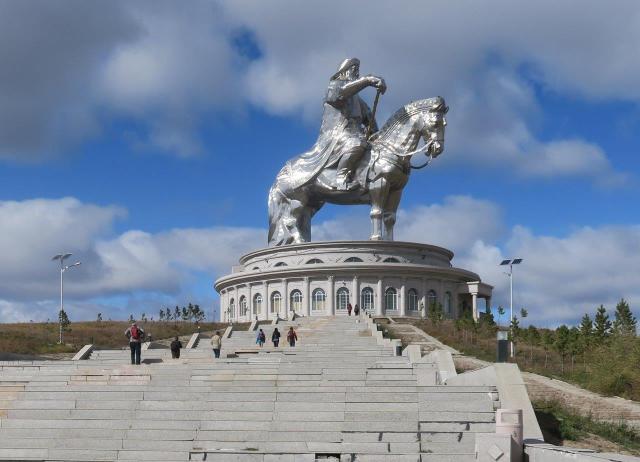Our final day in Mongolia culminated with a day tour of Terelj National Park and the Genghis Khan (Chinggis Khaan) Equestrian Complex.
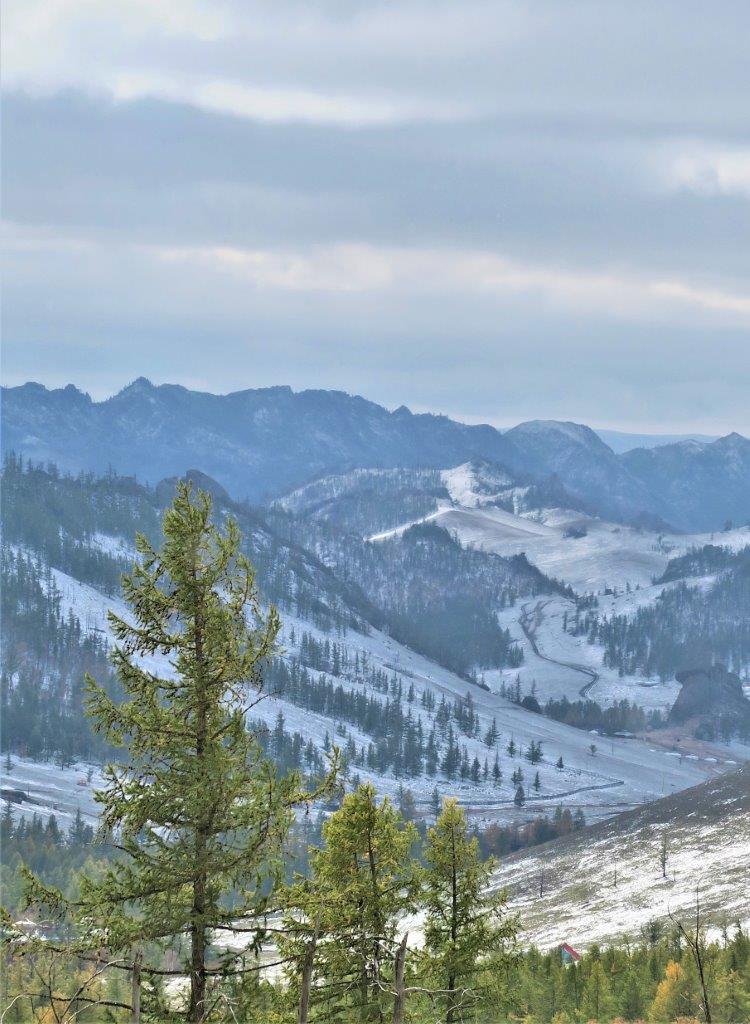
Mongolia’s Switzerland
Surrounded by snow-capped mountains, pristine alpine scenery, forest, rivers and wide open valleys covered with wildflowers, it felt like I was in Switzerland!
Terelj National Park is the third largest protected area in Mongolia.
The Terelj and Tuul rivers run through this picturesque national park that is famous for its unique dramatic rock formations, diverse flora and fauna.
At the cooler altitude of 1600m, ideal activities include rock climbing, hiking, swimming (in icy water), rafting and horse-riding. In winter, there is the possibility to ski and go on dog-sledding adventures.
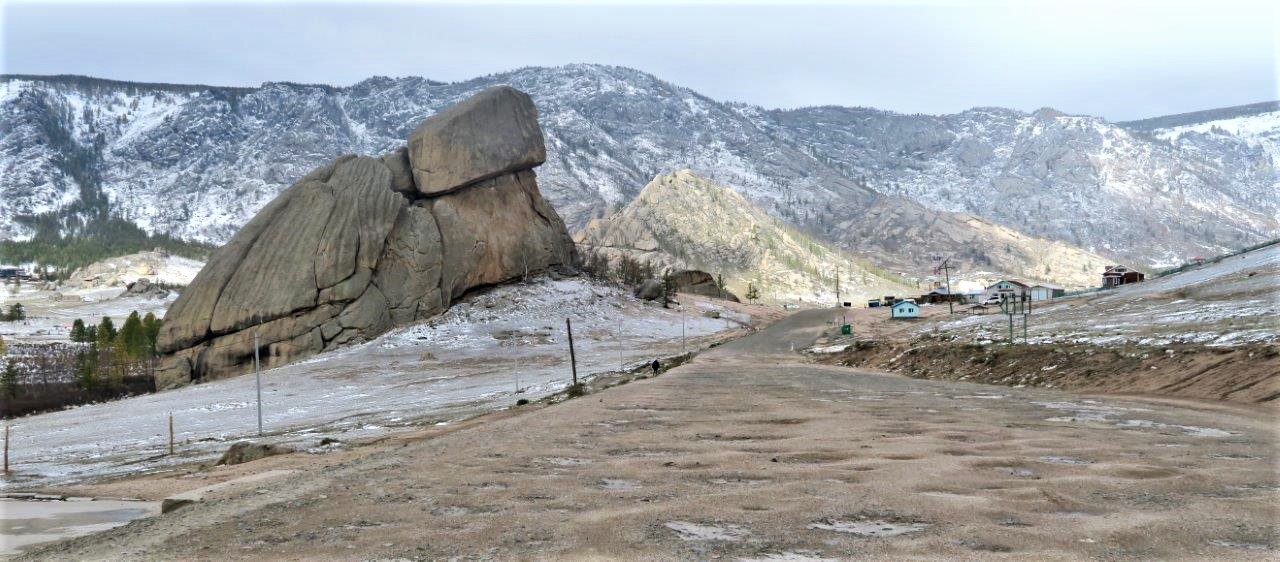
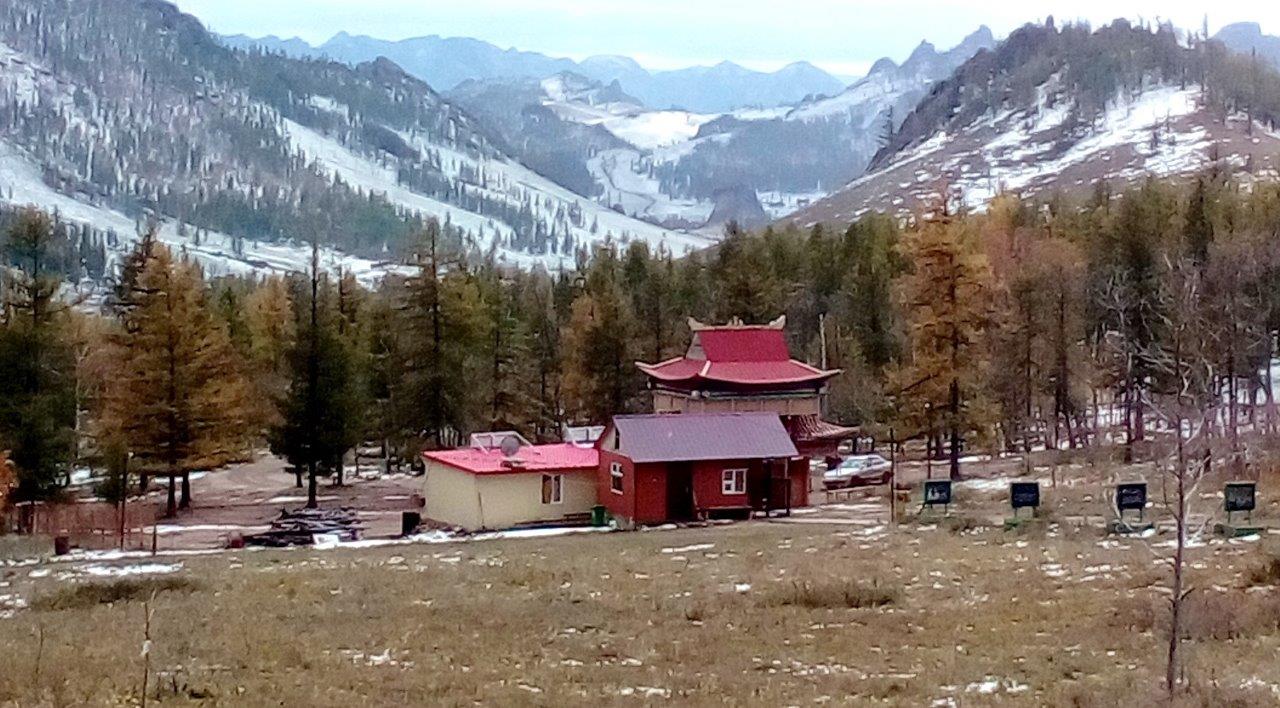
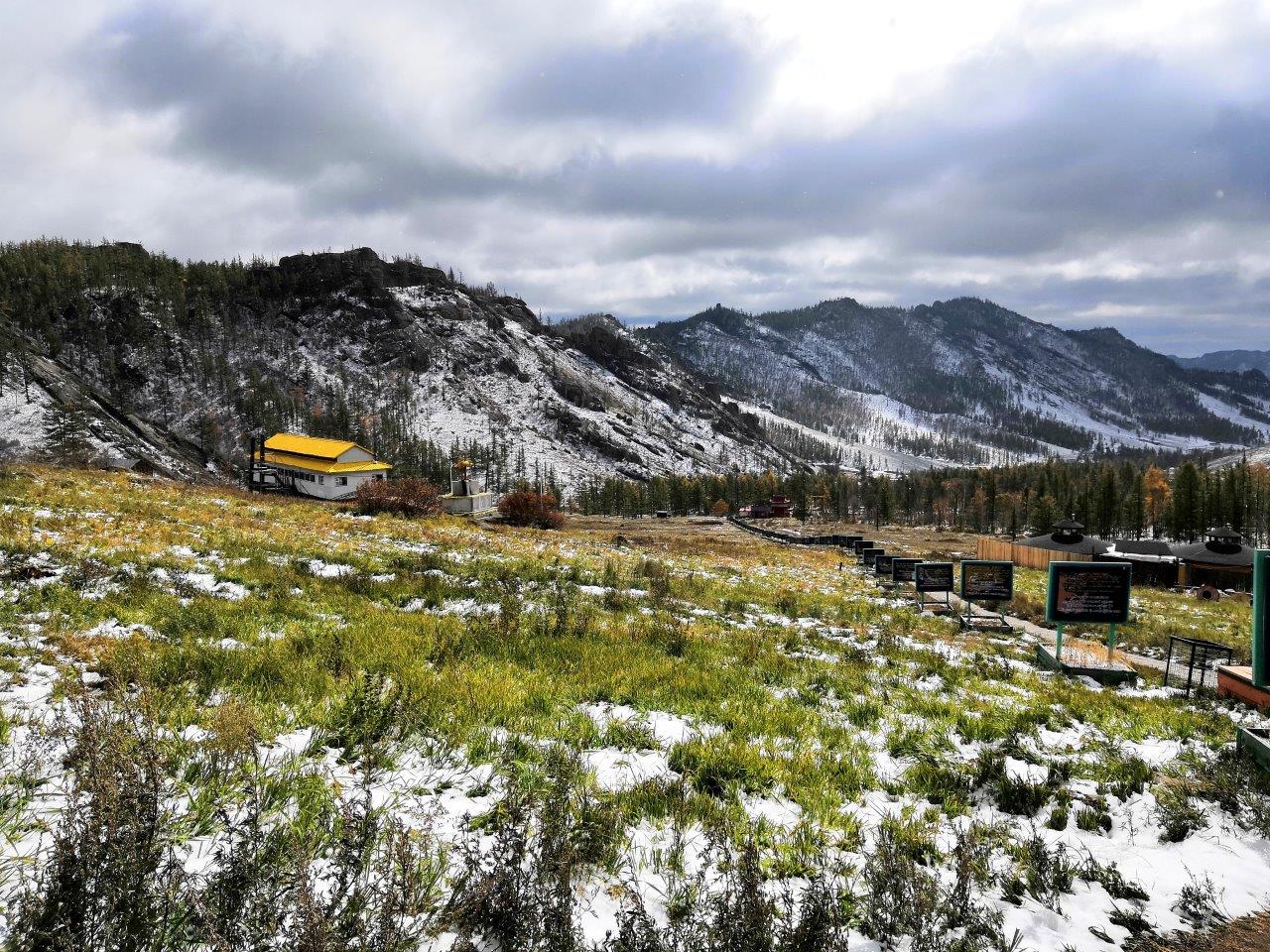
Turtle Rock “Melkhii Khad”
I did not expect to see such a huge turtle right at the entrance of the Park. Rising 24m high, the granite formation is one of the most vivid images carved by nature.
The main hiking route starts at Turtle Rock to the Ariyabal Meditation Temple.
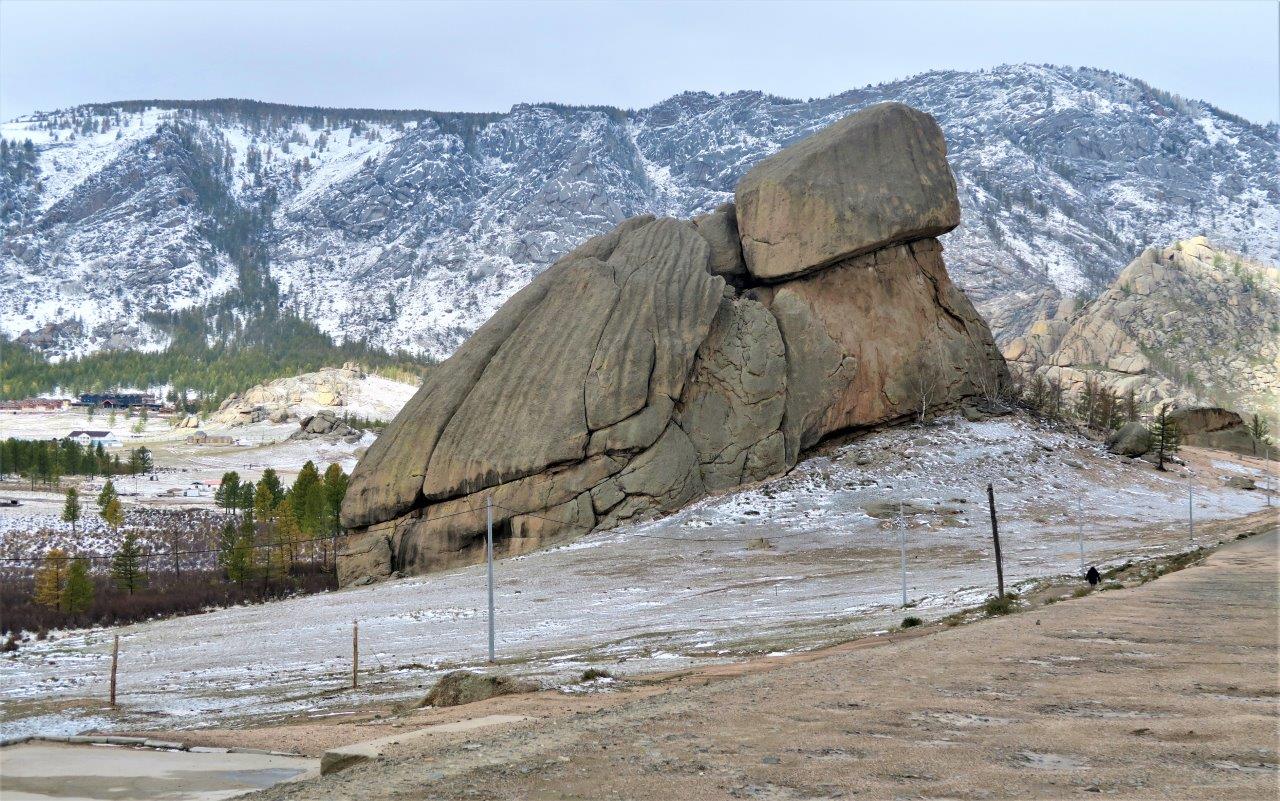
It was a blistering cold morning and I was glad we did not have to hike the 3km to the temple on top of a hill. Getting there by car took just 5 minutes.
Ariyabal Meditation temple
This impossibly tiny and out-of-reach Buddhist temple lies halfway up a mountainside, overlooking the valley below.
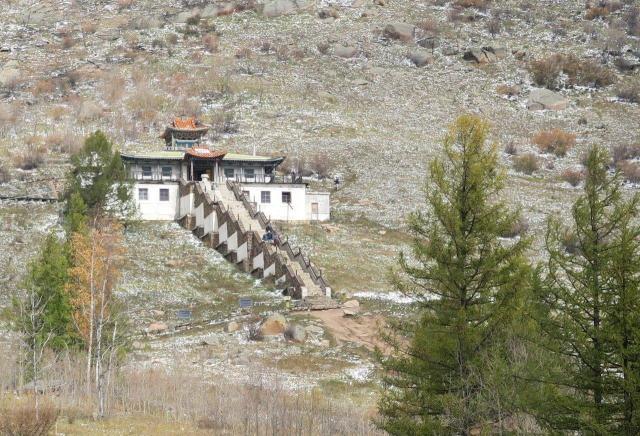
Built in the shape of an elephant’s head, the 108-step staircase symbolises its elongated trunk.
From the entrance gate, the last 1km to the temple is only accessible by foot. We took our time, enjoying the beautiful setting of rocky hillside amongst tranquil mountains thinly blanketed by pine trees.
For some inspiration, look no further than the 144 Buddhist teachings, presented in English and Mongolian, that lines the side of the path to the temple.
At the end of the signs is a prayer wheel, followed by a suspension bridge. After crossing the “Bridge of Heaven”, we started the approach to the main temple by climbing the ‘elephant’s trunk’ stone staircase.

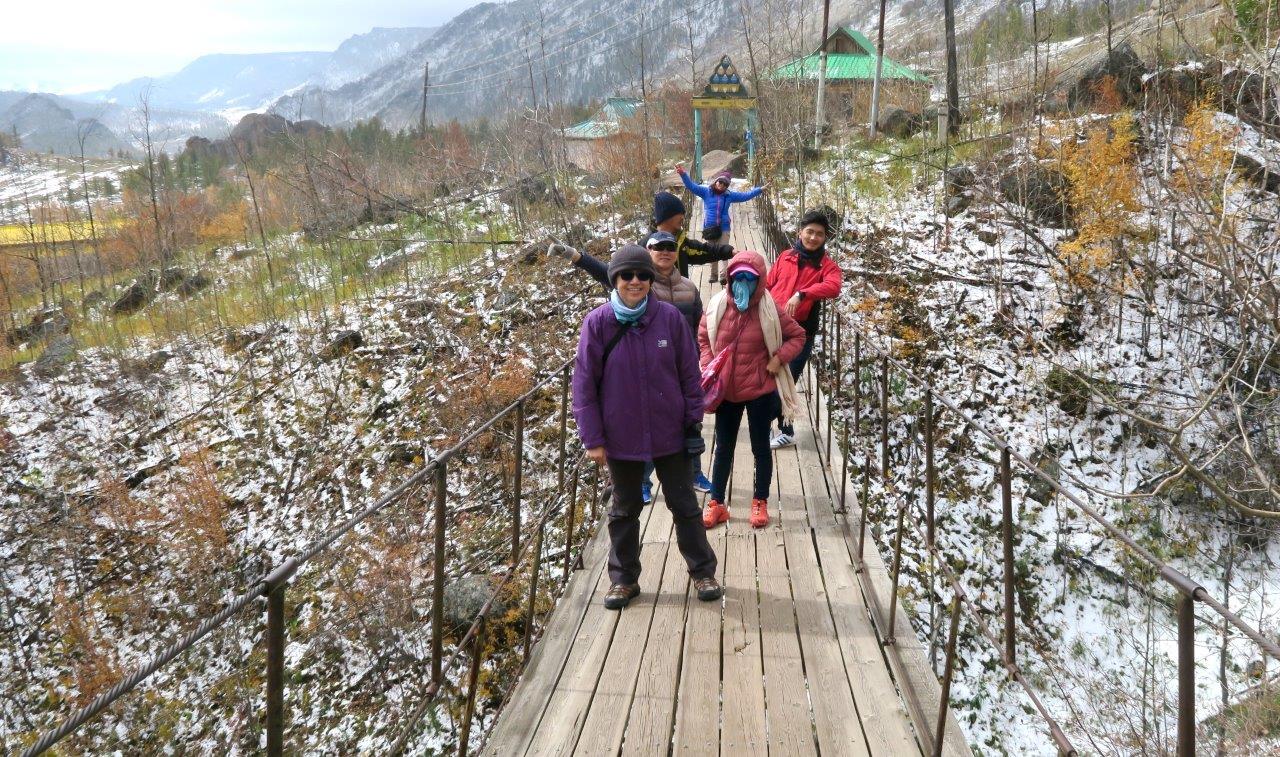
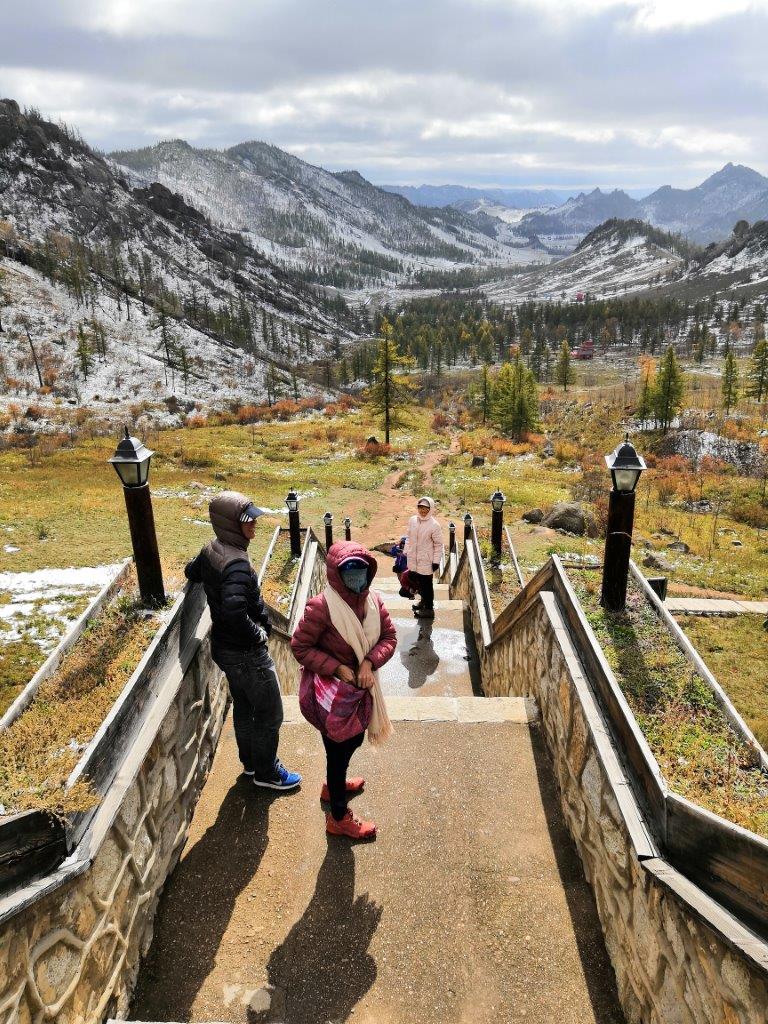
Originally built in 1810, Ariyabal Temple was restored in 1998-2004 and inaugurated in the summer of 2006. The small temple has a very bright interior with a couple of smaller side temples built into the rock.
Outside, there are 108 small stupas (left) and 108 prayer wheels placed around the temple. I was most intrigued by the ‘mouse’ doorknobs (right).
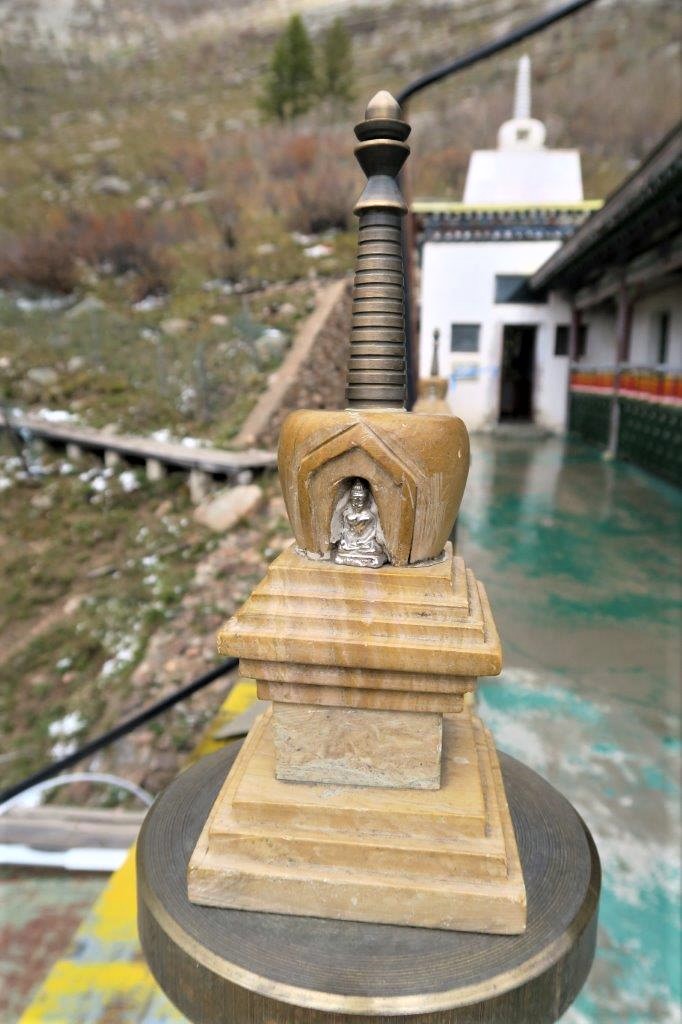
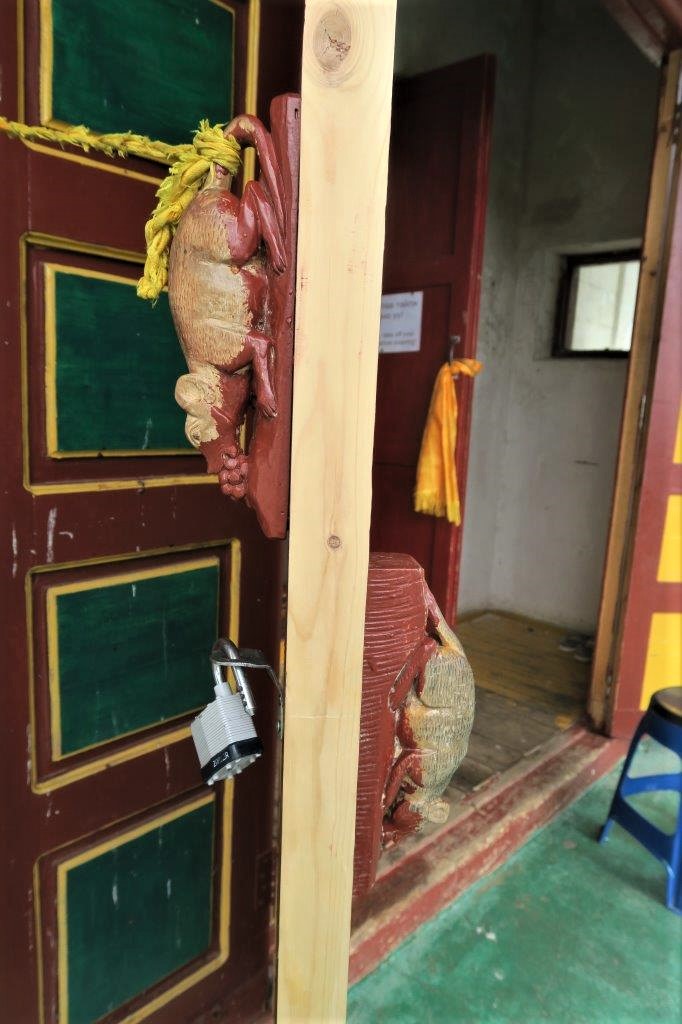
With the place all to ourselves, we lingered to savour the breathtaking views overlooking the scenic area of Terelj National Park, from the top of the temple.
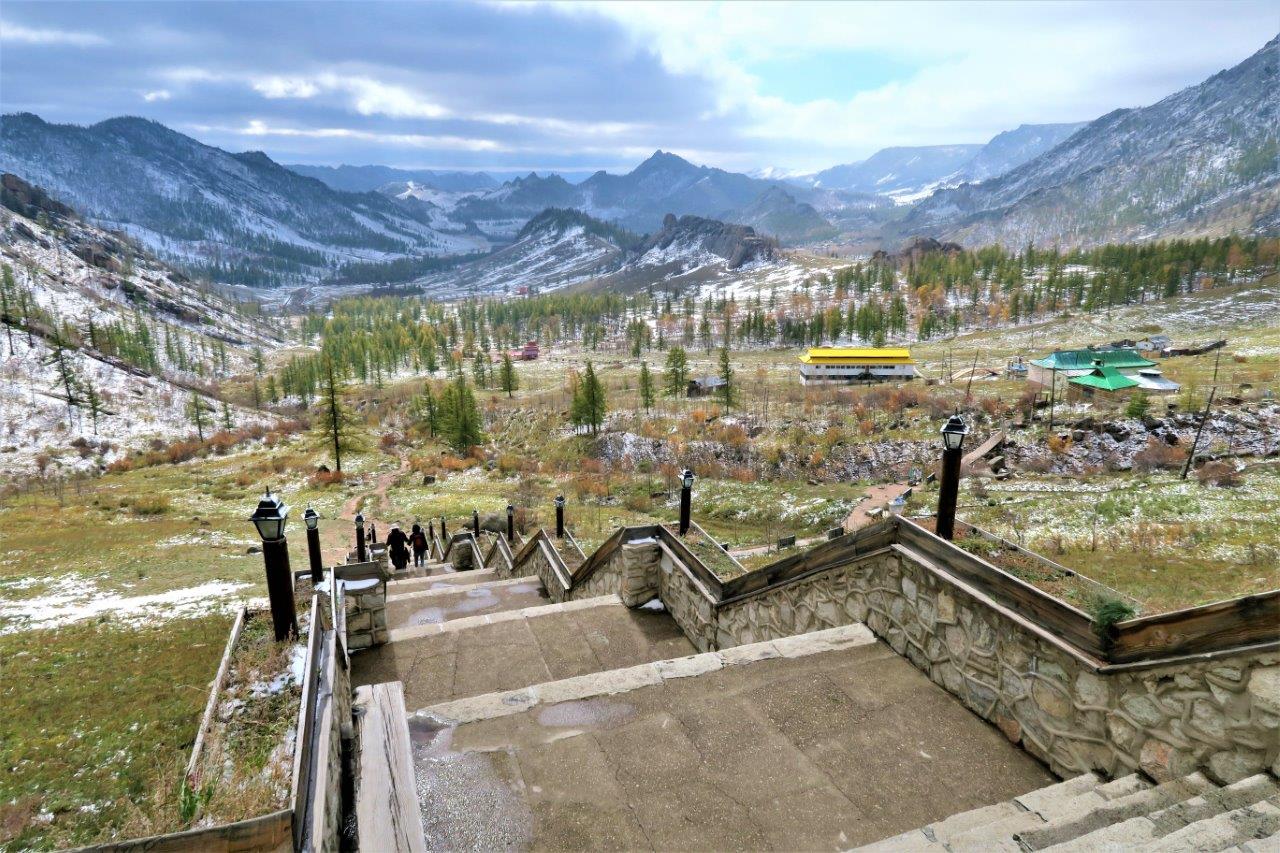
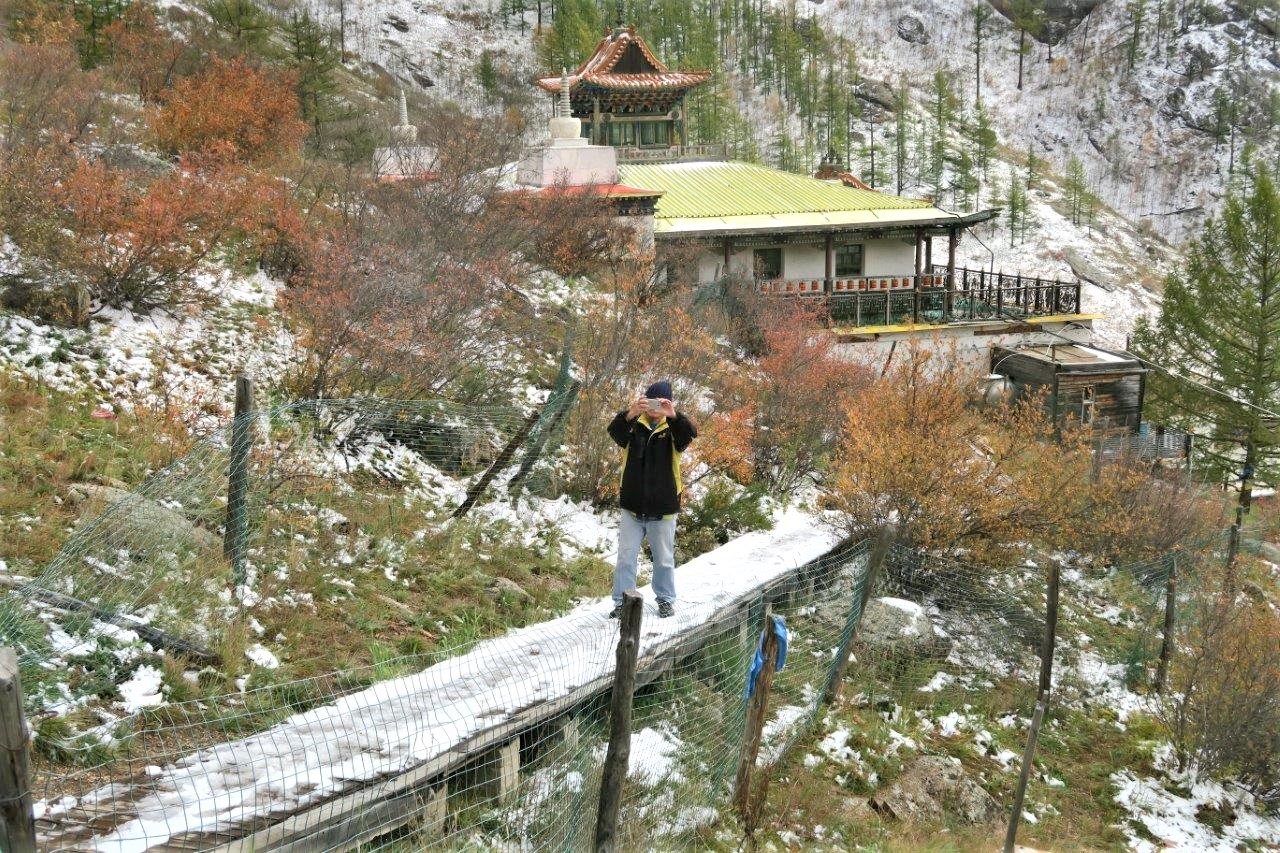
Terelj National Park offers postcards opportunities in every direction with its alpine landscape, massive rock formations set among scenic valleys and hills with a winding river and groves of trees. Leisurely strolls on meadows carpeted with a variety of wild flowers, fascinating rock formations against a backdrop of pine-covered mountains and hiking along the wooded banks of a mountain stream are some of the delightful ways to enjoy the beauty of nature. The park also has a Buddhist monastery that is open to visitors. Park wildlife includes brown bears and over 250 species of birds. The Park lies approximately 60 km northeast of Ulaanbaatar city center. It is in the Khentii mountains where Genghis Khan was born.
Genghis Khan Statue Complex – Largest equestrian statue in the world
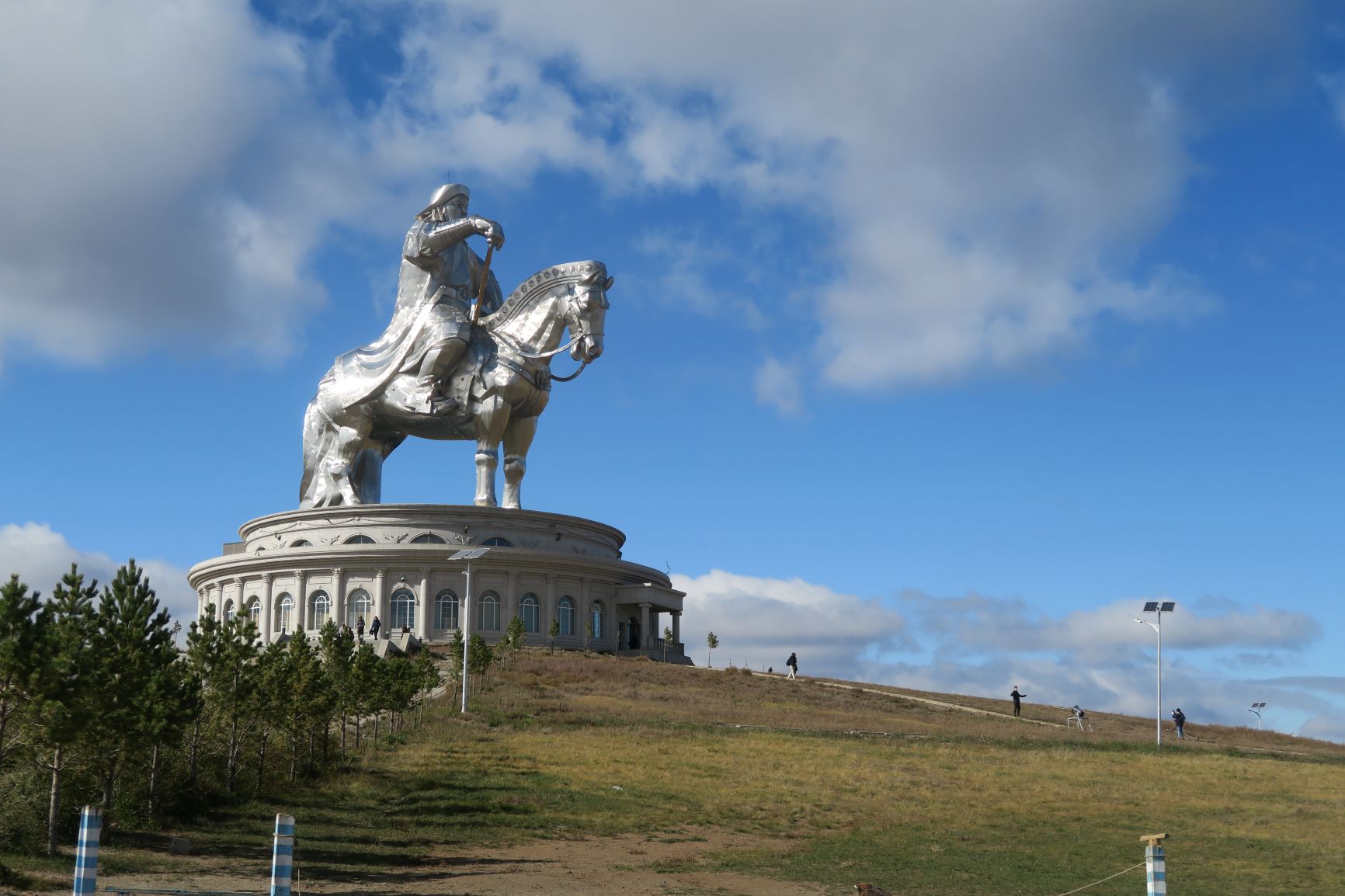
Just outside of Ulaanbaatar on the banks of the Tuul River, a larger-than-life Genghis Khan on horseback appears to preside over his Great Empire.
Genghis Khan (1162 – 1227)
The giant 40m-high glistening steel monument is dedicated to one of the most impactful leaders of all time and a Mongolian national hero.
Legend has it that Genghis Khan found his golden whip (a good omen in Mongolia) on the bank of the Tuul River and went on to conquer half of the world.
In 2008, the monument was erected high on a hill at Tsonjin Boldog, a site connected to many historic events in the territory. Made from 250 tons of stainless steel, the construction cost USD 4.1 million.
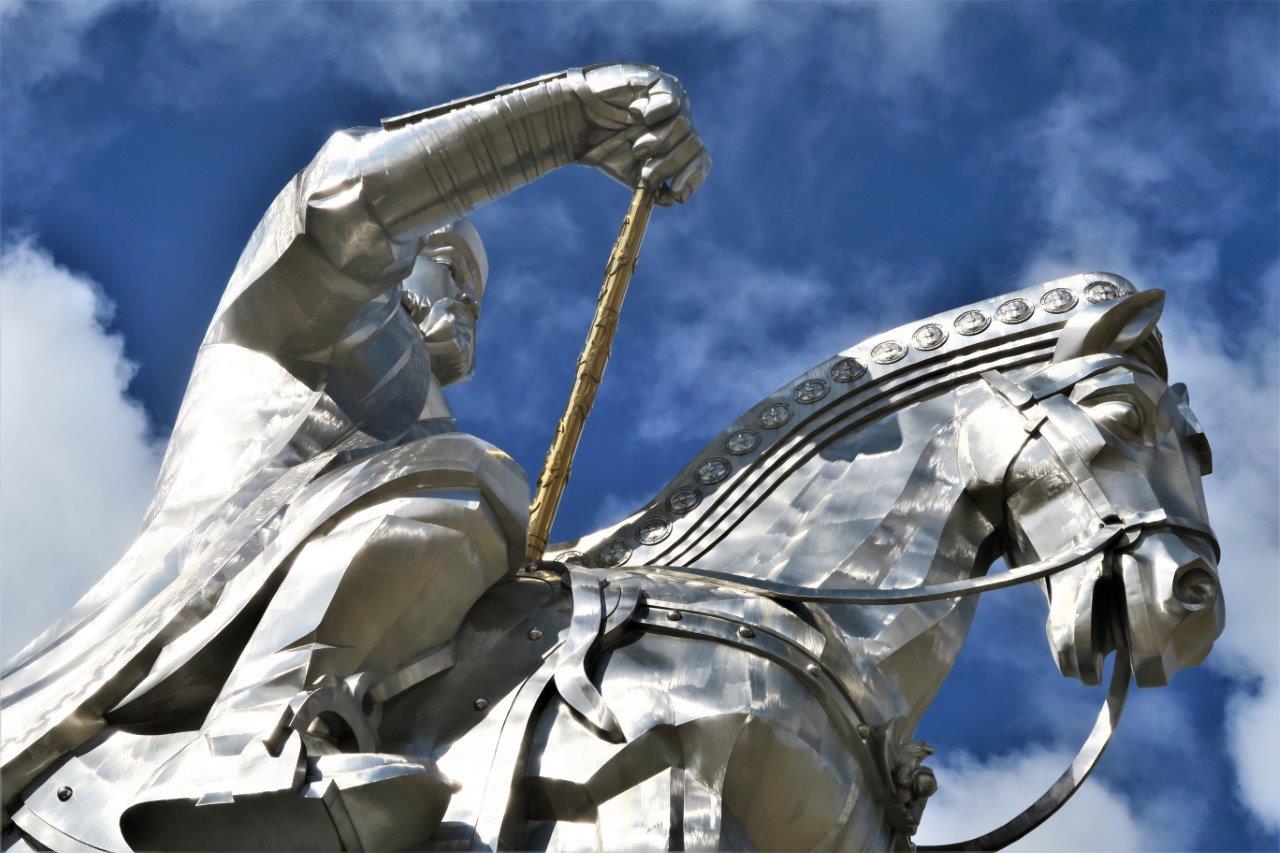
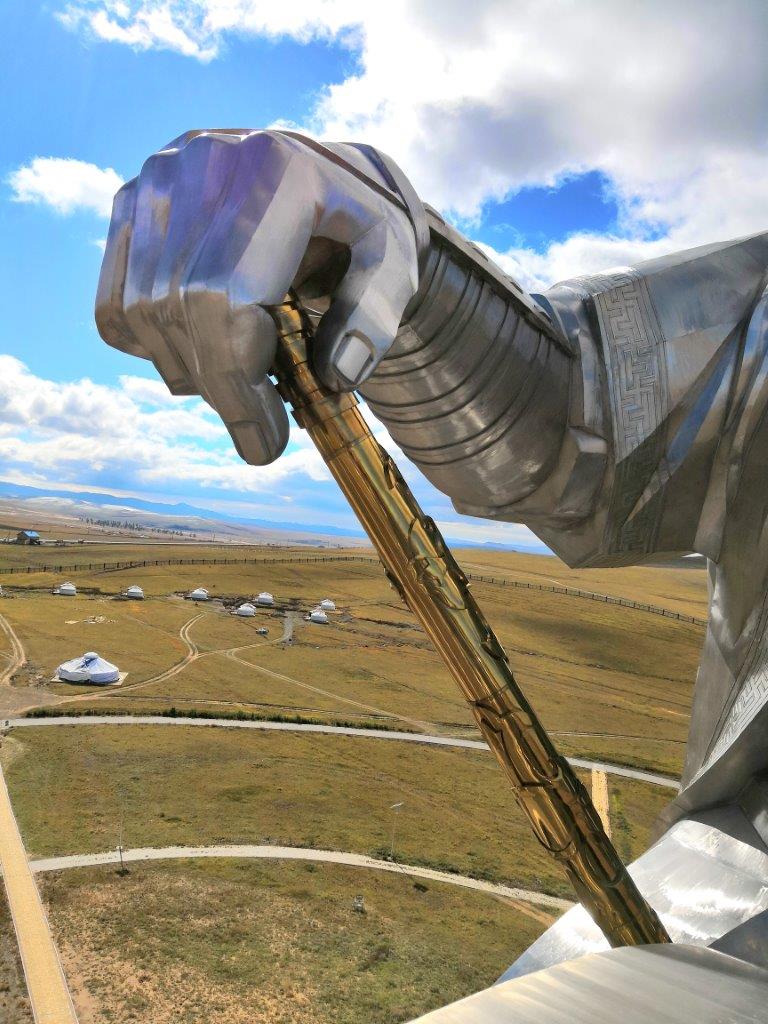
Just as we entered the building, a power failure occurred. With the elevator temporarily out of commission, we decided to climb the four flights of stairs to the viewpoint at the top of the horse’s head.
Do note, the middle two flights in the enclosed area is dark, so our phones came in handy for lighting the way, which gets brighter closer to the top.
From the belly of the horse, a staircase along its neck leads to the viewing area at the horse’s head. I did not expect such a close-up view and could almost feel the gigantic steely presence of this legendary warrior-ruler. I have never felt more tiny or insignificant.
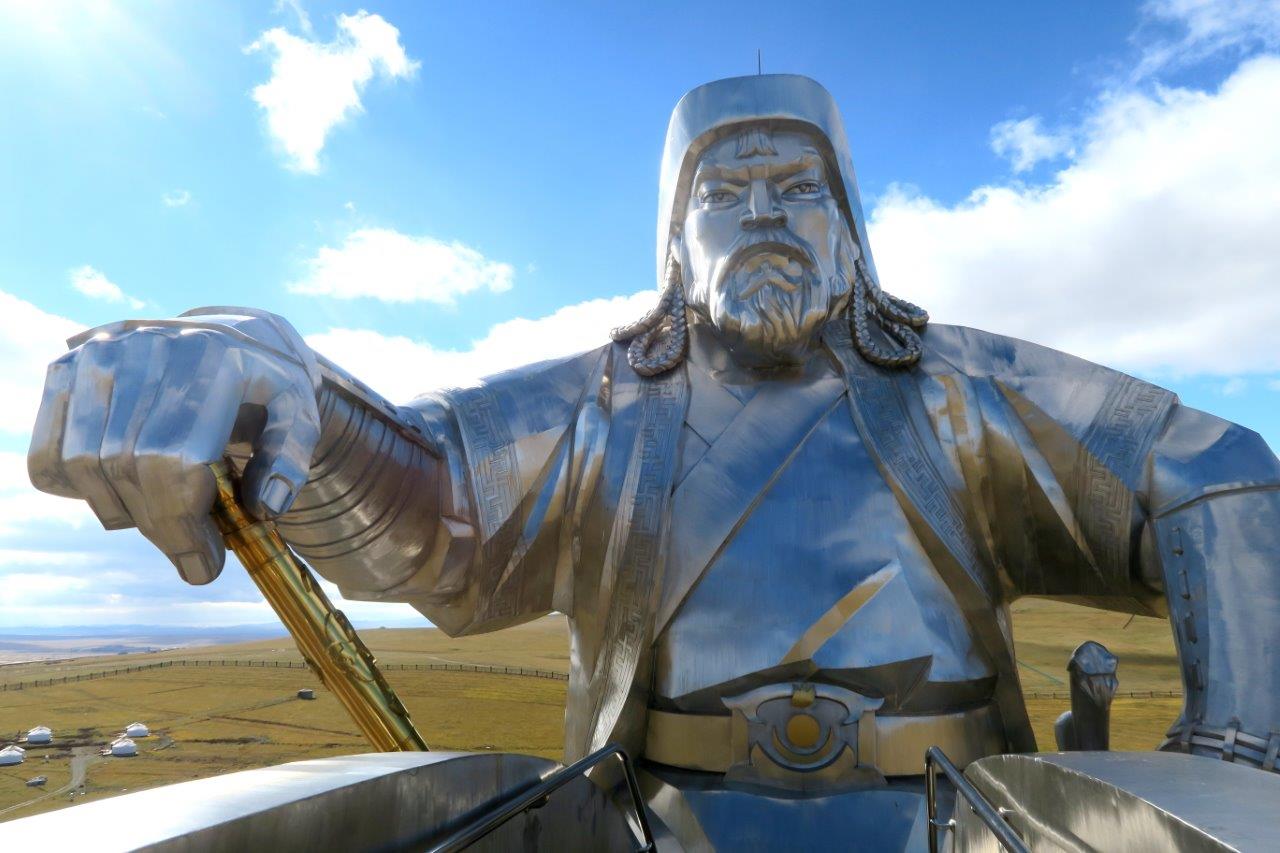
From this high perch, gale winds are even stronger and very, very cold. We retreated back inside and downstairs, hoping the power would be restored so that we could visit the Museum.
While waiting, I could not resist making a second trip up, hoping to find the place less crowded. I managed to get five minutes of solitude, which was sufficient for some clutter-free shots.
This time, I stayed out a bit longer to feast on the panoramic landscape of the complex area, tracing our route in, from the entrance gate to the carpark to the grand staircase up to the statue base.
I also had a bird’s eye view of the Mongol warriors (statues) – the army that protected Genghis Khan and advanced his empire.

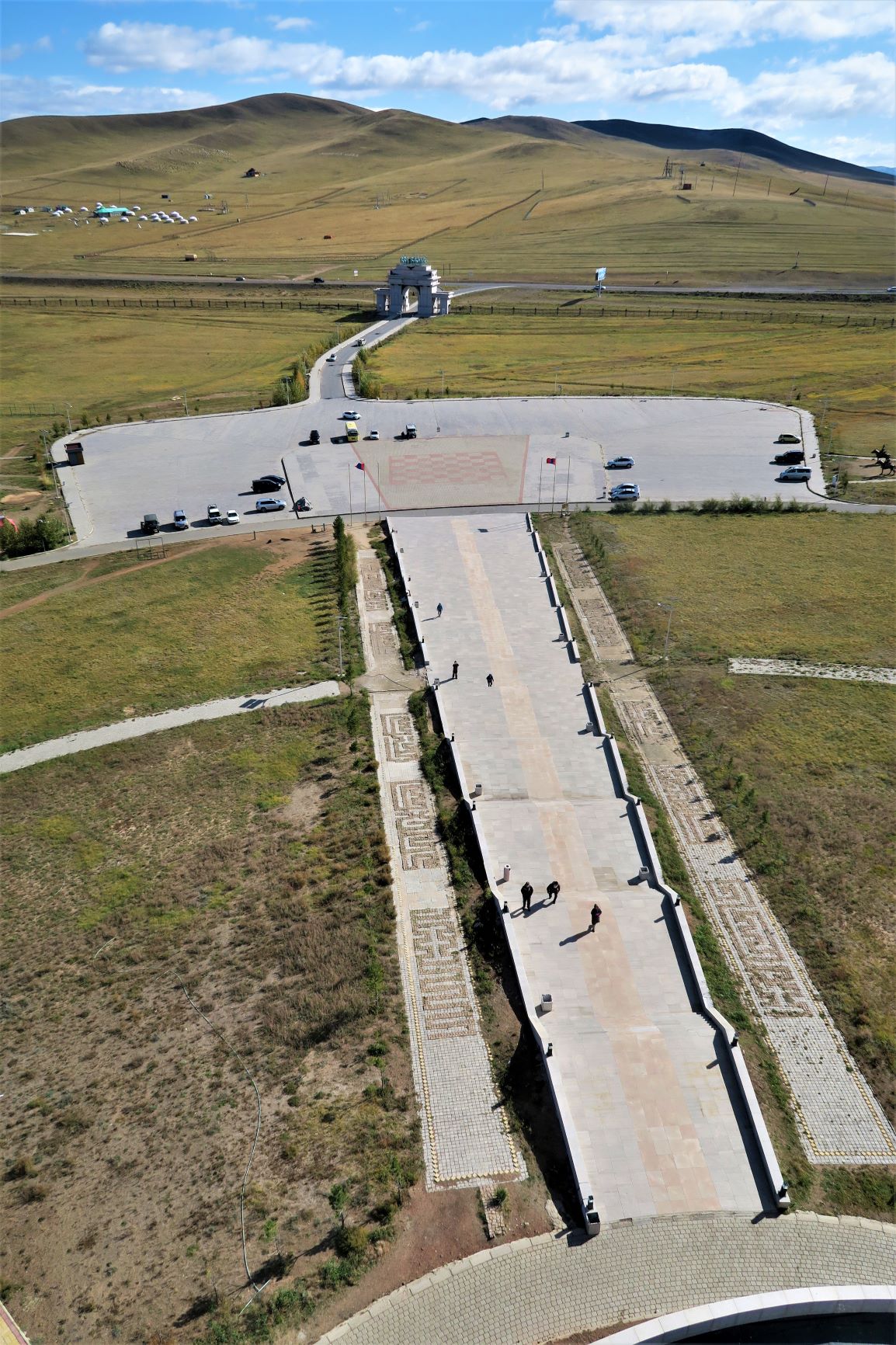
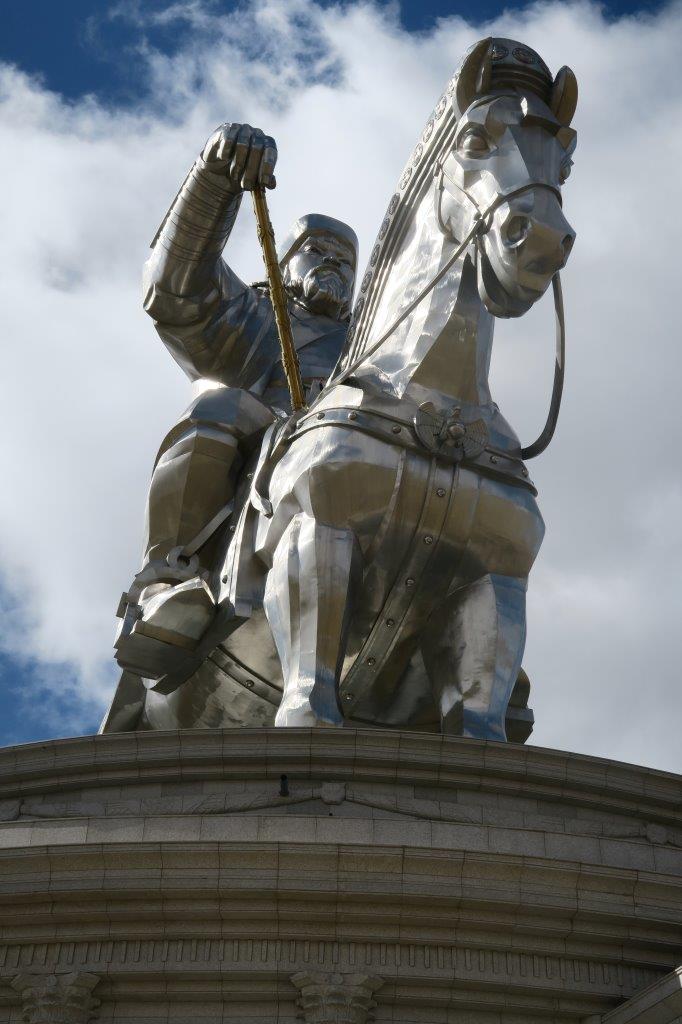
Two World Records
The complex has two Guinness Book of World Record awards – Tallest Equestrian Statue (40m) and Tallest Boot (9m).
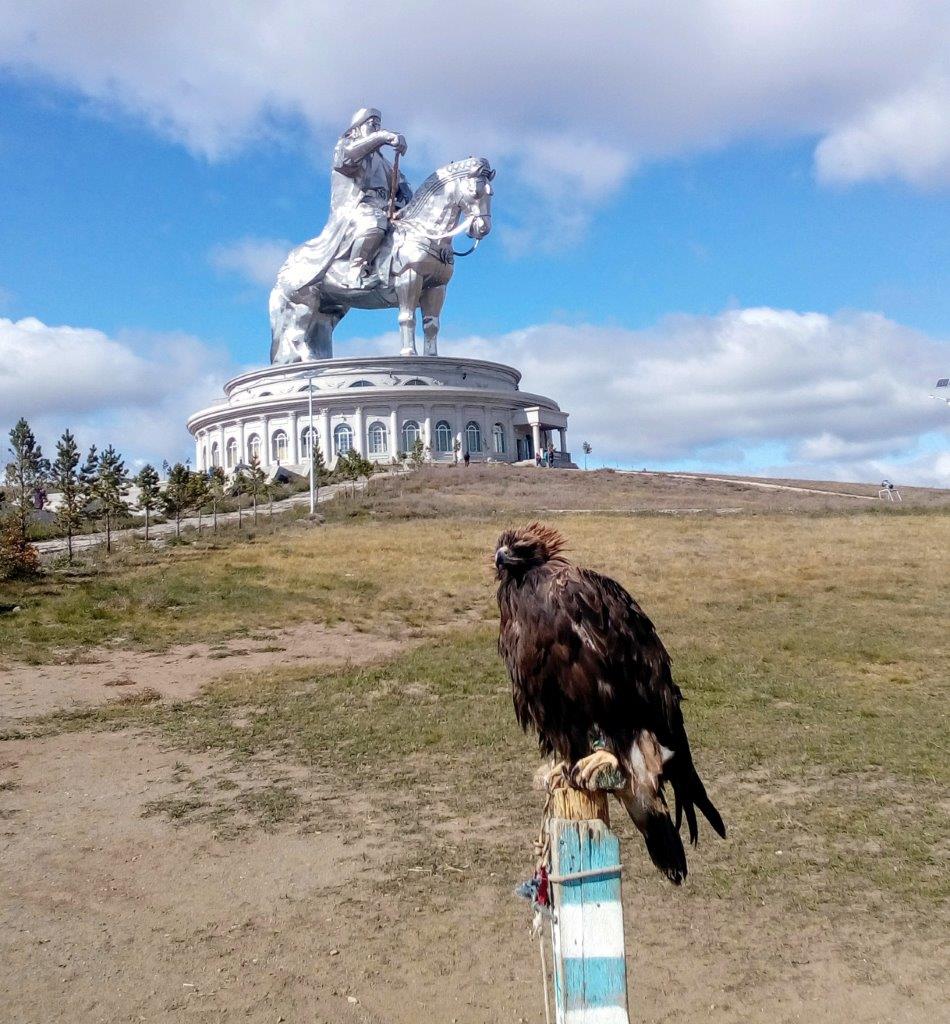
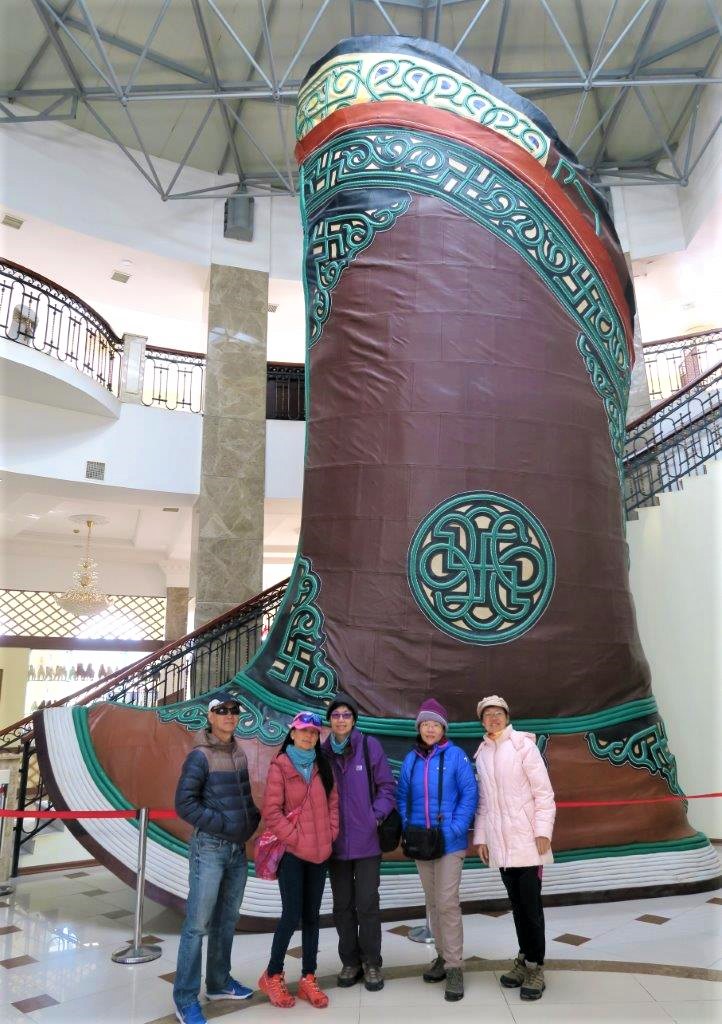
Genghis Khan Equestrian Complex is located at Tsonjin Boldog in Tuv province, 54 km outside of the capital city Ulaanbaatar. The impressive statue sits on a 10m high base that houses two museums, a restaurant and souvenir shop. The museum highlights the history of the Khan's, Bronze Age artefacts & other Mongolian finds, including a display of the culture and the way of life in Mongolia.
Visited 21 September 2018

